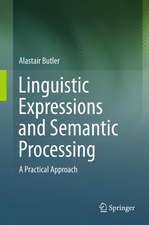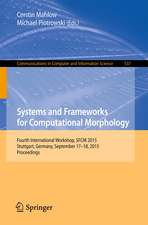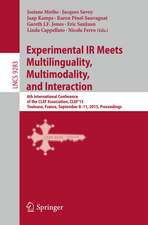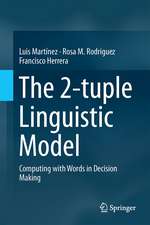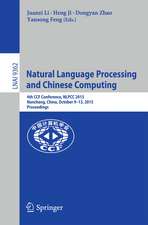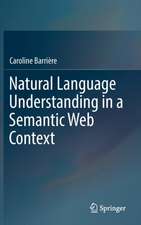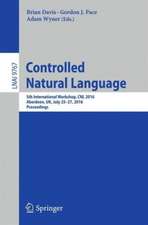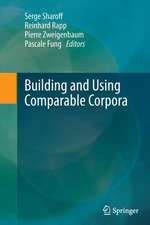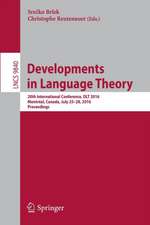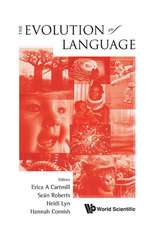Translation Engines: Techniques for Machine Translation: Applied Computing
Autor Arturo Trujilloen Limba Engleză Paperback – 8 oct 1999
MT on the Internet has become an important tool by providing fast, economical and useful translations. With globalisation and expanding trade, demand for translation is set to grow.
Translation Engines covers theoretical and practical aspects of MT, both classic and new, including:
- Character sets and formatting languages
- Translation memory
- Linguistic and computational foundations
- Basic computational linguistic techniques
- Transfer and interlingua MT
- Evaluation
Software accompanies the text, providing readers with hands on experience of the main algorithms.
Preț: 334.20 lei
Preț vechi: 417.75 lei
-20% Nou
Puncte Express: 501
Preț estimativ în valută:
63.95€ • 66.77$ • 52.81£
63.95€ • 66.77$ • 52.81£
Carte tipărită la comandă
Livrare economică 15-29 aprilie
Preluare comenzi: 021 569.72.76
Specificații
ISBN-13: 9781852330576
ISBN-10: 1852330570
Pagini: 316
Ilustrații: XII, 303 p. 3 illus.
Dimensiuni: 155 x 235 x 17 mm
Greutate: 0.47 kg
Ediția:Softcover reprint of the original 1st ed. 1999
Editura: SPRINGER LONDON
Colecția Springer
Seria Applied Computing
Locul publicării:London, United Kingdom
ISBN-10: 1852330570
Pagini: 316
Ilustrații: XII, 303 p. 3 illus.
Dimensiuni: 155 x 235 x 17 mm
Greutate: 0.47 kg
Ediția:Softcover reprint of the original 1st ed. 1999
Editura: SPRINGER LONDON
Colecția Springer
Seria Applied Computing
Locul publicării:London, United Kingdom
Public țintă
Professional/practitionerCuprins
Background: Introduction.- Computers in Translation.- History of Machine Translation.- Strategies for Machine Translation.- Artificial Intelligence.- Conclusion.- Basic Terminology and Background.- Linguistics.- Formal Background.- Review of Prolog.- Conclusion.- Machine Aided Translation: Text Processing.- Format Preservation.- Character Sets and Typography.- Input Methods.- Conclusion.- Translators Workbench and Translation Aids.- Translators Workbench.- Translation Memory.- Bilingual Alignment.- Subsentential Alignment.- Conclusion.- Machine Translation: Computational Linguistic Techniques.- Introduction.- Computational Morphology and the Two-level Model.- Syntactic Analysis.- Parsing.- Generation.- Conclusion.- Transfer Machine Translation.- Syntactic Transfer MT.- Semantic Transfer MT.- Lexicalist MT.- Conclusion.- Interlingua Machine Translation.- Lexical Conceptual Structure MT.- Knowledge-Based Machine Translation.- Conclusion.- Other Approaches to MT.- Example-Based Machine Translation.- Statistical Machine Translation.- Minimal Recursion Semantics.- Constraint Systems.- Conclusion.- Common Issues: Disambiguation.- POS Tagging.- Disambiguation of Syntactic Analysis.- Word Sense Disambiguation.- Transfer Disambiguation.- Conclusion.- Evaluation.- Evaluation Participants.- Evaluation Strategies.- Quality Measures.- Software Evaluation.- Software User Needs.- Conclusion.- Conclusion.- Trends.- Further Reading.- Appendices.- Useful Resources.- Bibliography.- Index.
Caracteristici
Considers Machine Aided Translation as well as Machine Translation Step-by-step construction of a fully functional translator's workbench, the principle architecture for MAT in current use Up to date discussion of Computational Linguistics and Artificial Intelligence issues and theories














